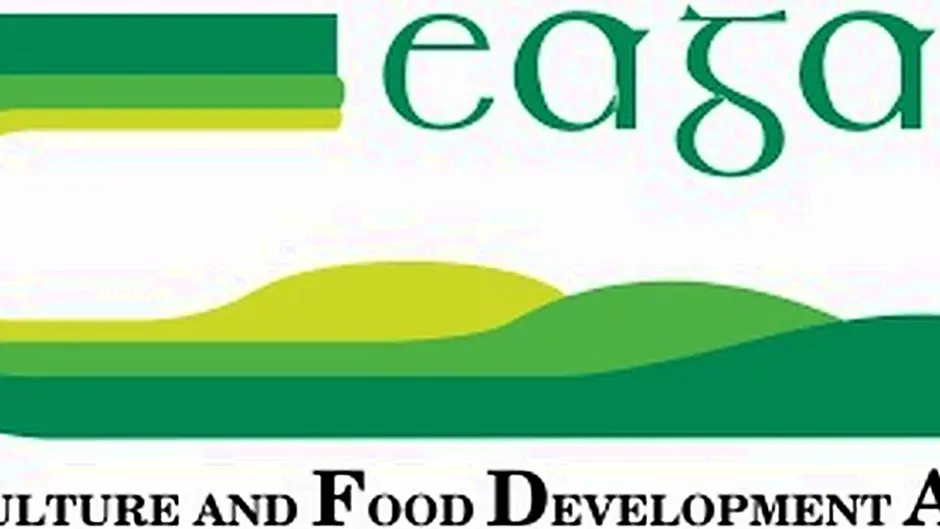The outlook for farm incomes in 2017 is mixed, according to Teagasc.
THE outlook for farm incomes in 2017 is mixed, according to Teagasc.
Milk prices should recover, but beef prices are likely to fall and there is uncertainty about how tillage farmers may fare. These are some of the conclusions of Teagasc’s Annual Review and Outlook, published in Dublin this week.
The fall in sterling due to Brexit concerns has already created challenges for the agriculture sector in Ireland in 2016. Analysis produced by Teagasc economists indicates that farm margin fell on most farms in Ireland this year. Supplies of milk, beef and grain internationally have been running ahead of demand and this has led to a fall in farm prices.
Lower production costs in 2016 offset some of the effects of falling output prices. For the second year in a row, lower oil prices, led to a significant fall in fuel prices. There was also a gradual decline in fertiliser prices over the course of the year.
Teagasc economist Trevor Donnellan said: ‘Even though milk prices fell by an estimated 11 percent, Irish milk production is estimated to have increased by about 5 percent in 2016.’ While dairy production costs fell, Irish dairy farm margins were lower in 2016 due to the drop in the value of milk sales.
However, a late season rally in milk prices, along with the additional volume of milk produced this year, has limited the drop in dairy farm income in 2016. Dairy sector competitiveness indicators produced by Teagasc also show that Irish dairy farms continued to be one of the lowest-cost producers internationally in 2016, despite the fall in margins.
Increased supplies of cow beef and continuing slow growth in demand, led to lower cattle prices in 2016 as compared to 2015. Dr Kevin Hanrahan, an economist with Teagasc, said: ‘In Ireland, the reliance on the UK market means that the fall in sterling contributed to the estimated 5 percent drop in Irish finished cattle prices.’
On single suckling farms in 2016, the receipt of payments under the Beef Data Genomics Programme (BDGP) will offset the negative impact of lower prices on margins, which will stay largely unchanged on 2015 levels. On cattle finishing farms, the lower output prices in 2016 are reflected in lower gross and net margins.
Sheep prices in 2016 declined marginally compared to 2015. Taking account of lower costs of production in 2016, margins earned on sheep farms are estimated to have increased by 3 percent.
A fall in Irish cereal yields, along with low cereal prices, following another bumper global harvest, resulted in a year of low margins in the Irish cereals sector in 2016. Dr Fiona Thorne, Teagasc economist, said: ‘The average cereal farmer will struggle to return a positive market-based net margin in 2016.’
Michael McKeon of the Teagasc Pig Development Department said that ‘Pig farmers had a year of two halves, with very low profitability in the first half of the year, offset by a significant improvement in the second half of the year as China increased its pig meat imports.’
In spite of the fall in margins, overall, agricultural income in Ireland in 2016 is likely to be broadly in line with the 2015 level, as the annual receipts from the Basic Payment Scheme and GLAS should be higher in 2016 than in the previous year.
2017 predictions
A SLOWDOWN in growth in global milk production should mean that dairy margins will increase in 2017, with milk prices forecast to be 20 percent higher. Irish milk production should also increase, providing an additional boost to the dairy farm bottom line.
By contrast, the Irish beef sector is facing into a difficult year in 2017. Beef supplies across the EU are forecast to increase next year. Demand for beef in the EU is not particularly strong and EU beef prices are likely to fall by up to 10 percent.
Given that the UK market is particularly important for Irish beef exports, the weakness of sterling will also have an adverse impact on beef prices in Ireland which are forecast to decline by 12 percent.
Tillage farmers will be hoping for a better year in 2017, but this will be contingent on the level of the global grain harvest. High global grain stock levels mean that even if yields are lower, any upward movement in cereal prices will be limited.
Overall, the increase in profitability in the dairy sector in 2017 is forecast to be sufficient to offset a significant decline in beef farm income, leaving overall agricultural income in Ireland about 5 percent higher in 2017.







